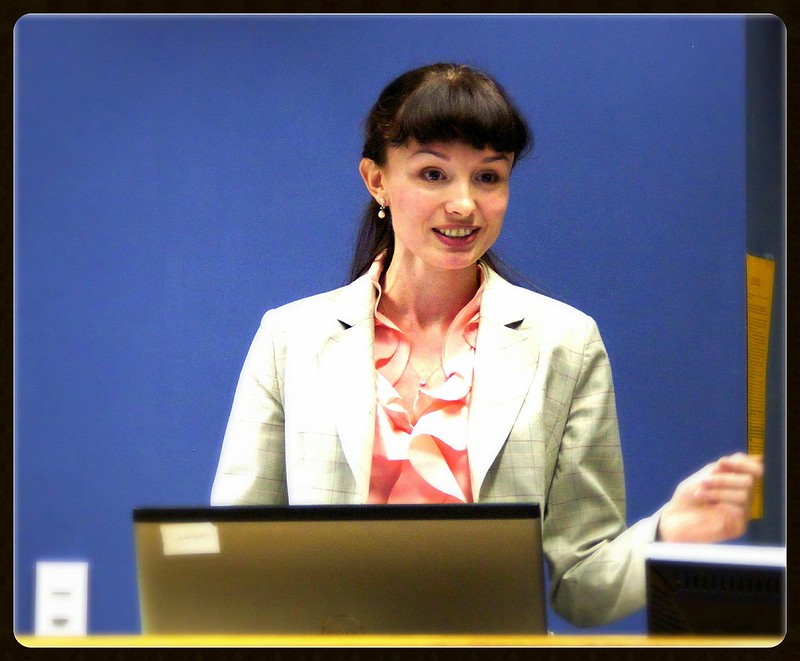By Nisha Garud
Lectures and discussions on media
structures and journalistic practices in the online International Mass Media
class of the Study of US Study of US Institute (SUSI) 2014 summer
program continued with insights into journalistic practices in Russia, India, Philippines,
and Kuwait.
 |
| Russian scholar Inna Shumkina |
Inna
Shumkina, Professor at Samara State University in
Samara, Russia, spoke at
length about the post-Soviet Union media system. She noted that journalists in
her homeland are categorized into three main generations;
the ones before 1990s are disciplined professionals and consider journalism as
an important task. Those in the 1990s were mere practitioners with no formal
training or education. She elaborated that during this period, journalism was
an open field. The third generation of journalists is in the ages of 15 or 16
years and has little interest in investigative journalism. They support some
political party and are not aware of the journalistic rules and regulations.
Talking about the television, Inna said
that television was the most popular medium in Russia and most of the
television content was about entertainment. “There are about 300 television
channels in Russia. The content is about television serials and films. It has
changed a lot. In the 90s, Russians watched a lot of Latin American shows but
now it is completely Russian,” she said.
Shashwati Goswami from Indian Institute
of Mass Communication in Delhi, India reflected on the state of community radio
in her country. “It takes 11 approvals
from ministerial departments to start a community radio station. People, who
need such a radio station are from remote parts of the country and do not have
the money to travel to the capital city and to apply for license. The situation
is worse in the country’s north-eastern part, which is secluded from the
mainland, because there is only one community radio station. This station is
owned by an educational institution and plays no role in the development of the
rural people.” Shashwati discussed media
ownership in India. She said India has a liberal democratic regulated media
system. She said that the media ownership dictates the media content in India.
The struggle for Filipinos to overthrow
an autocratic ruler and restore democracy was the main feature of Agnes Nepomuceno’s lecture.
The scholar from Philippines gave a glimpse into
the history of her country when it was a Spanish colony. Talking about media in
the Philippines,
Agnes said the country was the 2nd
deadliest place for journalists. “The media coverage has a high concentration
of political and corruption news. If the government dislikes some coverage, it
can sue the journalist for libel,” she said. She added that the internet is
catching up but people still rely on radio for breaking news in the Philippines, which is
at a risk of natural calamities.
Yousef Al-Kazim from Kuwait presented a video that he and
his colleagues shot and edited to give the audience a glimpse into Kuwait’s
culture. He noted that Kuwait is the most liberal country in the Gulf but the
press is still controlled by the government and does not enjoy the freedom like
in some Western countries. “It is an unsaid rule that Congress and
the state leader are not to be ridiculed. There is pre-censorship on movies and
theater. Television and radio hold the second biggest share of the advertising
market.”
Scholars were curious to know about gender equality in
Kuwaiti media. Yousef elaborated that the ratio of women journalists to the men
is almost negligible. However, the television news channels are initially
recruiting one female anchor per channel.




No comments:
Post a Comment